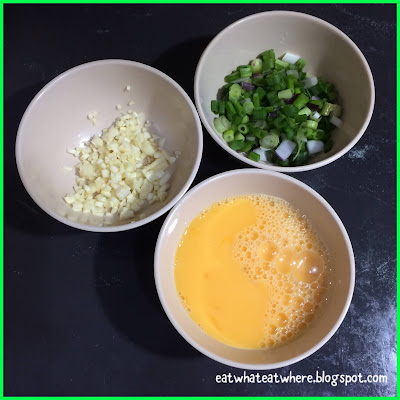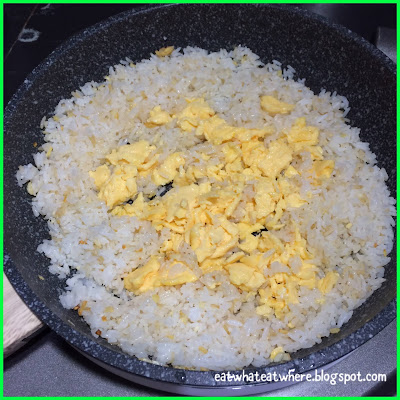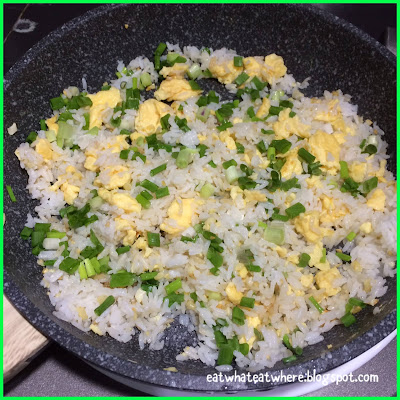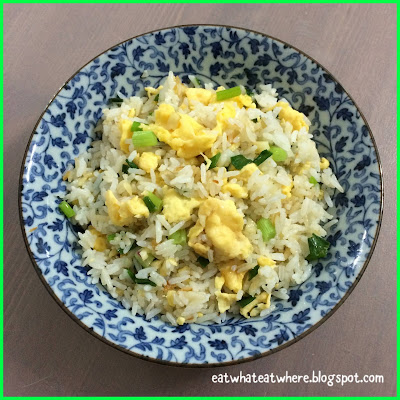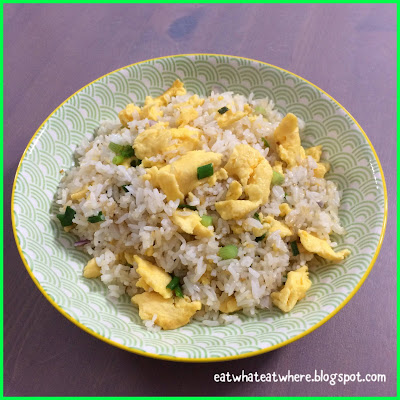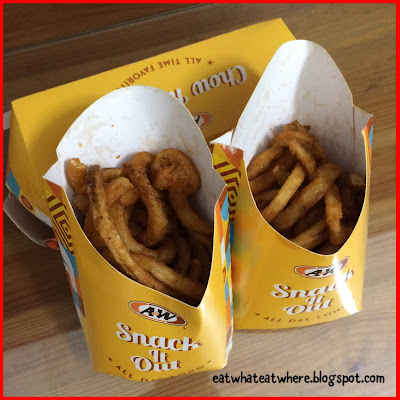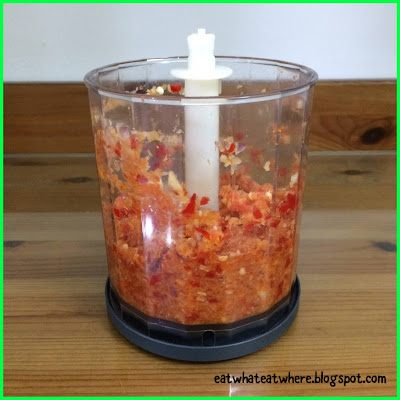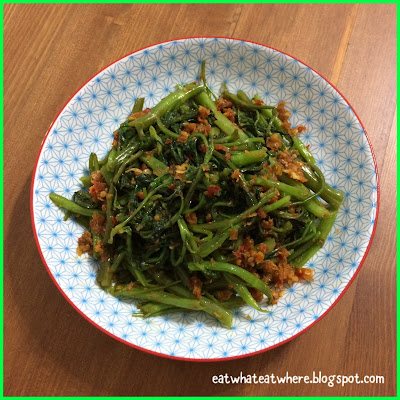This simple and humble dish of egg fried rice seems to be getting a lot of fame and attention on the internet lately with many putting out their own videos and recipes on their version of egg fried rice. So, I thought I'll join in the fun too.
Well, I think most of us would have read by now the hoo-ha surrounding the egg fried rice dish showcased by one BBC food presenter, Hersha Patel, who received a lot of brickbats on how she cooked the dish (watch Uncle Roger Disgusted by this Egg Fried Rice Video).
This incident got further traction when a Malaysian stand-up comedian (Nigel Ng) based in UK, using the moniker Uncle Roger, made a hilarious video and trolled the way she made her fried rice which went viral (and garnered more than 19m views) and, along the way, turned Uncle Roger into a household name with more than 2.9m subscribers currently on his YouTube channel. Incidentally, he only had about 9k subscribers before that video which then shot up to over 900k after the video (sometimes all one needs is a lucky break). They have since 'made up', of course, by appearing in an interview and subsequently made another video on the subject (watch Uncle Roger Meet Egg Fried Rice Lady).
First and foremost, egg fried rice is supposedly a humble dish, so I'll do justice to it by keeping it simple (as it should be) with just three basic ingredients - eggs, spring onions and garlic...and rice, of course.
The most important thing to get right is the rice itself....and you start by cooking it right. I was horrified (like many others) when I saw the
BBC lady drain rice. Who cooks rice that way? We never ever drain rice. We, Asians, cook rice in a rice cooker using the absorption method (rice cookers were
designed to do exactly that) although sometimes I do cook it over a stove top by steaming if I'm making a small portion (but still using the absorption method, no draining whatsoever).
Next question is...how much water do you use? No, Uncle Roger, I don't use my finger as a gauge. If I did, the water would be too much and the rice would be too wet. How much water to use really depends on the type of rice you use. For me, I let the water come up to about half an inch above the rice. But I do remember my mom teaching me how to press my hand against the rice (once it's in the rice cooker) and let the water come up to a certain level of my palm...but I didn't see a need to practise that method either). As to whether we need to wash the rice, I've seen some good quality rice that doesn't need to be rinsed (like some salad leaves we eat out of a packet). But many Asians (and Malaysians) may buy cheaper rice, so it needs to be rinsed + it helps to get rid of starch for a better texture. >_<
Once you've got the rice cooked right, some will tell you it works best with leftover rice, preferably left overnight in the fridge to dry out (this was what Sherson Lian recommended too). But I will tell you (from my own experience) that you don't have to use leftover rice or rice cooked from the day before. You can cook it on the same day you want to make fried rice as long as the cooked rice is fluffed and had enough time to cool down. For me, if I want to make fried rice for dinner, I make sure I cook the rice by lunch time. In other words, use room temperature rice...not cold rice from the fridge. I did that once and found the rice too dry, hard and clumpy (even after I've loosen it)...and you end up having to splash water on the rice (during the frying process) to moisten the rice.
Great fried rice starts with frying (two) eggs (beaten with a pair of chopsticks or a fork, there's no difference whatsoever...lol) in 2 - 3 tbsp of oil, scrambling it actually. We do that by stirring the eggs around the pan to get the eggs fluffy. Some say to add a bit of water into the eggs to get them fluffy but I've never tried or had to do that coz the key to fluffy eggs is to not overcook them...it's as simple as that. So, don't wait for them to be fully cooked before you dish them up, it just needs to be 50% - 75% cooked since the heat of the rice will cook it fully later.
Add in another 2 - 3 tbsp of oil and stir-fry the chopped garlic (lots of it, at least 3 large garlic cloves). You could also use a combination of garlic and shallots like
Sherson did. I watched
Seonkyoung Longest cooked her version of fried rice and was greatly surprised that she didn't use any aromatics at all. In Chinese cooking, we were taught that aromatics (such as garlic, shallots, onions, ginger, chillies or even the white parts of the spring onion) are very important, otherwise it just wouldn't taste as good.
Once the garlic is lightly golden and fragrant, you can put in the cooked rice (the portion here is about 2 rice bowls or 2 cups). If you didn't cook the rice right and start with mushy rice, you're doomed already. A tip would be to use a little less water than you normally would to cook the rice so that the grains stay firm. Use your spatula to press down on the rice to get rid of any lumps.
At this point, you can season your rice with salt or light soy...but do be forewarned that the liberal use of light soy will darken your rice and we don't want that in egg fried rice, so make sure you use good quality soy (that's light-coloured)...or use a combination of salt and soy. Of course,
Uncle Roger highly recommends the use of
MSG in fried rice or any dish...lol. Sorry,
Uncle Roger, I did not use
MSG but I did use 1 tsp of chicken stock granules (does that count?). You can certainly bump it up to 2 tsp (or more) if you like your fried rice saltier together with 1 tsp of light soy (just for a bit of colour). This was lightly salty, nicely subtle for me.
If you're happy with how your rice look and taste, pour the almost cooked eggs back into the rice. Break up the egg into smaller pieces with your spatula. I like to keep some in big pieces for a good bite.
Once that's done, add in the chopped spring onions. My rationale for seasoning the rice first before the eggs and spring onions go in is because once these two go in, you'll only need a minute or so to stir that into the rice to ensure the egg is not overcooked.
And yes, Uncle Roger, I used a pan to cook egg fried rice (I can hear your haiya already)...but, at least, I used a wooden spatula...hehe! That's my new Shogun pan, by the way, after my Chefology pan lost its non-stick capability after 3 years of usage. Let's see how long this one (which I bought during a Shopee promotion) lasts. The gwai lo try to look authentic by using woks when they cook Asian dishes while I, an Asian, prefer to use a pan to cook (role reversal..haha!). Anyway, I find cooking in a pan way more ideal (and easier) for 3 reasons...1) when cooking smaller portions of food for a small family, 2) it's so much easier to pour cooked food onto a plate/bowl and 3) no need to wash a
big-ass wok! ;D
Hey, I've not used a wok in ages since I switched to induction cooking...yes, you heard right, Uncle Roger, I use an induction stove
and we can't very well use a rounded bottom wok when we're using a flat top induction cooker, can we? And
Uncle Roger, a flat-bottom wok is not a
real wok lah (at least not to me)! ;P
Wok hei can only be achieved with high heat...and flames! So we can't expect that for our home cooking (sorry, no fire!) even if we're using a gas stove coz it's not those high heat intensity industrial cooktops like the ones used by restaurants (if you're using induction stove,
lagi no hope). Neither do we pour oil into a smoking hot wok (and pour it out) to get the wok hot like a restaurant chef (otherwise we might need to call the
Bomba to come when our kitchen is filled with smoke!). If we fry and toss our rice well enough (the key is to not fry too big a portion at one time), we should be proud if we get a slight hint of
wok hei (I did get a little bit, perhaps not
wok hei but
pan hei).
Now, all three chefs used a chilli paste in their fried rice (Jamie called it chilli jam, Sherson called it sambal belacan and Gordon added both sambal and rendang paste...call it whatever you want, it's the same thing...it's some form of chilli paste). It's quite common and acceptable to fry rice with a chilli paste for flavour...but not in egg fried rice, not for me. That would be more of a Malaysian or Indonesian nasi goreng or a Thai fried rice.
Sherson also added pounded fried ikan bilis to provide that salty, fragrant, umami taste to the fried rice. I guess, we (Malaysians) love our ikan bilis as I've seen it with Ili Sulaiman's nasi goreng kampung as well where she blended dried ikan bilis together with a chilli paste for her fried rice.
Of course, fried rice is a very versatile dish so it's up to the chef's interpretation of how he wants to cook it, so you see chefs adding all sorts of things like meat (pork, chicken or beef, bacon, even sausages, lap cheong, char siew or luncheon meat) and vegetables (carrots, bell peppers, peas, onions, long beans) into it...and they call it egg fried rice as long as egg is one of the ingredients. I prefer to call that fried rice. For me, egg fried rice should stay to its truest form...with egg as the only star ingredient.
I think Jamie's fried rice is ok except I won't put all the spring onions into the oil to sizzle in the beginning (maybe just the white part as that's considered an aromatic in Chinese cooking). I also would skip putting tofu as that would give the rice a wet consistency since silken tofu is 90% water anyway (+ I've never seen tofu in fried rice before). I can understand why
Jamie added water to his rice coz he used chilled rice (from the fridge) and (from my own experience) the rice grains will be dry. I can also relate to
Jamie putting in chilli jam which is like bottled chilli sauce to us (I do that sometimes with my spicy fried rice too when I don't have a fresh chilli paste on hand).
This egg fried rice dish is one that many Chinese households have cooked at one time or another. Eggs, garlic and rice are staples in any Chinese pantry and this simple fried rice is something that can be whipped up at a moment's notice when we have nothing to cook or don't have time to cook something elaborate.
Although I've not cooked (and eaten) this egg fried rice for a long time, I've cooked it quite often since the egg fried rice video went viral. Believe it or not, this humble egg fried rice is now my favourite form of fried rice...overtaking luncheon meat fried rice, shrimp fried rice....even bacon fried rice! :P What can I say....it's the simplicity of it that I like and you'll be surprised at just how good it is. Fuiyoh, my simple version was rather delicious (if I have to say so myself)
....and best presented too in my new green design, yellow-rimmed plate to match the dish! ^o^
It's even better if you happen to have some crispy, fried shallots around that can be used as a topping for your fried rice. And if you happen to have fried shallots, that means you'll also happen to have shallot oil, so use that to fry your rice and it'll be even tastier.
In the end, I guess there's no right or wrong way of cooking egg fried rice as it's opened to many interpretations. Since fried rice is a pretty versatile dish, we usually cook it with whatever we can find in our pantry or fridge. As long as it's a delicious outcome that you and your family enjoy, you can cook it in any way you like. So, how would you cook your version of egg fried rice? ^_~
I'm proud that a fellow Malaysian has found success...and wish him even greater success in the future (and make more videos, I'll be waiting to watch). Hmmm, I wonder if Uncle Roger would approve my (his humble niece from Malaysia) version of egg fried rice. I can already think of three things he will call me out on...1) not using a wok to fry rice (haiya, where's your wok, where's the wok hei?), 2) using induction cooktop (haiya, no fire?) and 3) not using MSG (haiya, must put MSG, the king of flavour, on everything)...lol! Thanks, Uncle Roger, for your viral (and funny) videos on egg fried rice...and making me want to cook egg fried rice. P/S: Happy watching (the videos if you've not seen them yet) over the long weekend/festive holiday! ^_~
Serves 1 (if all you're having is fried rice) or 2 (with other side dishes)

















